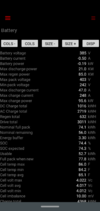Candleflame
Active Member
Very frustrated with my Tesla Model 3 LR (2018, delivered in 9/18). I have lost 14% of my battery capacity in under 3 years and 30,000. I'm a very careful charger, rare trips, rare supercharging, very, very rare 100% charges. Here is what I get from the service center:
View attachment 679242
I don't consider 14%'slight degradation' and really don't want to have to wait another 3 years to get to 70% and a new battery. Other than the charging maneuvers outlined above, any other thoughts? Thanks. Jon
Its the standard reply you get until its 30%. Unfortunately there is nothing you can do about it. Its frustrating. Best advice i can give is to trade your car in for a different one... Its the battery lottery. If its any condolences model 3 usually does degrade to 10% quite quickly. I suspect you have a faulty module the car has bypassed....




